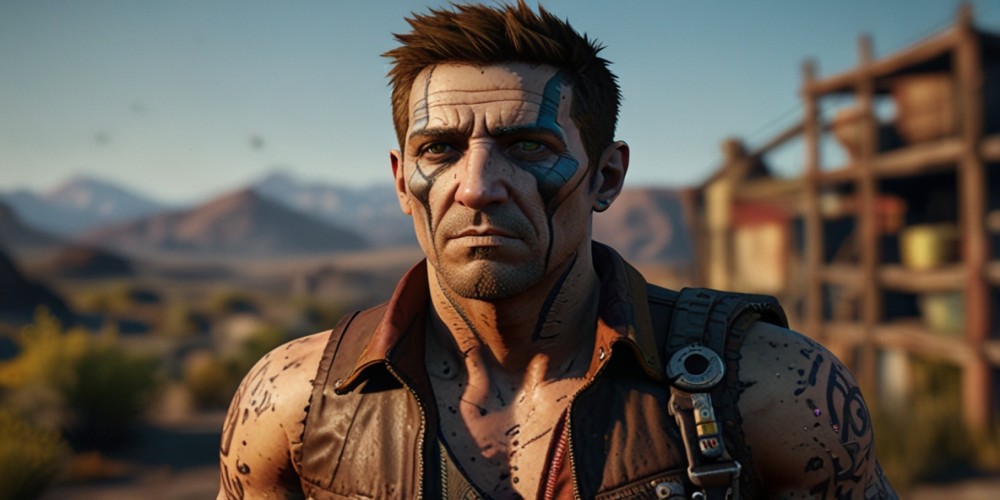Borderlands: A Cinematic Adventure That Misses the Mark
- Aug 12, 2024
- 0

The adaptation of video game franchises into cinematic experiences has transitioned through various stages over the years. For long, fans were led to believe that a movie based on a beloved game was destined for failure. However, recent years have ushered in some successful representations that have altered this perception. Sadly, not all adaptations share this success, and one of those is the recent film "Borderlands.” Directed by Eli Roth, it attempts to translate the dynamic chaos of its video game predecessor onto the silver screen. But does it succeed, or does it rehash the same pitfalls of many previous adaptations? In this exploration, we delve deep into the various facets of Borderlands, uncovering what works and what decidedly does not.
The Premise of Chaos
Borderlands is set in the arid and unforgiving landscape of Pandora, a planet filled with deceitful corporations and desperate treasure seekers. The storyline centers around Lilith, played by Cate Blanchett, who sets out on a mission under the employ of Atlas, portrayed by Edgar Ramirez. Her task? To find Tiny Tina, a character with a convoluted origin as she is not merely a kidnapped child but rather a puppet engineered from alien blood meant to aid in unlocking the ancient vault of immense power. As Lilith embarks on this quest, she encounters the character Roland, played by Kevin Hart, who has already liberated Tina from captivity, setting the stage for a series of frantic events.
The Team Assembles
As the story unfolds, Lilith, Roland, and Tina must navigate a course through the chaotic wilderness of Pandora while contending with the challenges posed by Atlas's soldiers. They soon gather allies, including Tannis, a quirky scientist played by Jamie Lee Curtis, and the much-anticipated robot, Claptrap, voiced by Jack Black. The crew's dynamic sets the foundation for much of the film's action and humor. However, it struggles to find a unique voice amid the backdrop of familiar tropes and uninspired dialogue.
Claptrap's Role: A Missed Connection
Claptrap, a character notorious for his witty remarks and recognizable quirks in the video game series, has been unfortunately subdued in this adaptation. With Jack Black voicing the character, what could have been an exciting addition instead feels like an awkward misstep. The essence of Claptrap, which resonated with so many fans, does not translate well through Black's interpretation. Rather than capturing the character's irony and charm, he comes off as an unwelcome distraction whose humor often lands flat, ultimately changing the tone of the film dramatically.
The Struggle of a Star-Studded Cast
The cast, rich with talent, struggles to elevate the material at hand. Cate Blanchett, while noted for her efforts, falters with her execution of the American accent and fails to deliver a performance that captivates the audience. Kevin Hart's portrayal of Roland straddles the line between action hero and dry wit, but his character is rarely allowed room to flourish. The overall impression left by the adult cast members is one of underutilization, missing out on the potential for deeper character development that could have enriched the narrative.
The Bright Spot: Tiny Tina
A standout performance comes from Arianna Greenblatt as Tiny Tina. While her role tends to recede into the background later in the film, her initial portrayal is vibrant and engaging, adding depth to a largely uninspired ensemble. Greenblatt showcases the potential of the character as a spark of energy amidst the film’s chaos, making her a highlight in an otherwise forgettable experience.
A Grating Rating and a Pursuit of Depth
One of the film's significant drawbacks is its PG-13 rating, which strips away much of the rawness that characterized the original game experience. Audiences are left wanting more grit and authenticity, as the film feels homogenized, akin to a sanitized version of an R-rated spectacle. Clocking in at only 102 minutes, Borderlands leaves viewers yearning for depth—something this adaptation sorely lacks. The brevity rushes character arcs and storylines, which could have been fleshed out if given the space to breathe. The result is a shallow retelling of an often rich, multi-layered narrative.
Unremarkable Visuals and Execution
Despite Eli Roth's previous acclaim in the horror genre, Borderlands showcases a troubling lack of visual flair. With extensive post-production and reshoots, the film struggles to present a cohesive creative vision. Rather than feeling like an engaging cinematic adventure, what unfolds feels more akin to a low-budget offering that fails to capture the imagination. Instead of vibrant landscapes that echo the game’s artistry, viewers are left with a generic backdrop that does not do justice to the vibrant world it attempts to depict.
A Generic Outcome
Borderlands epitomizes an unambiguous admonition that not all video game adaptations ascend to greatness. It finds itself burdened by a leaden script, lackluster performances, and an uninviting visual landscape. While it tries to blend humor and action, the execution falls flat, resulting in a movie that feels generic and disposable. There are, however, brief moments of brilliance scattered within its runtime, from Tiny Tina's engaging portrayal to glimpses of potential in the action sequences. Ultimately, though, as the credits roll, the film epitomizes the feeling of being instantly forgettable—one that may disappoint fans of the franchise and fail to capture the attention of newcomers alike. Thus remains the ongoing quest for a great video game adaptation, still largely unfulfilled.